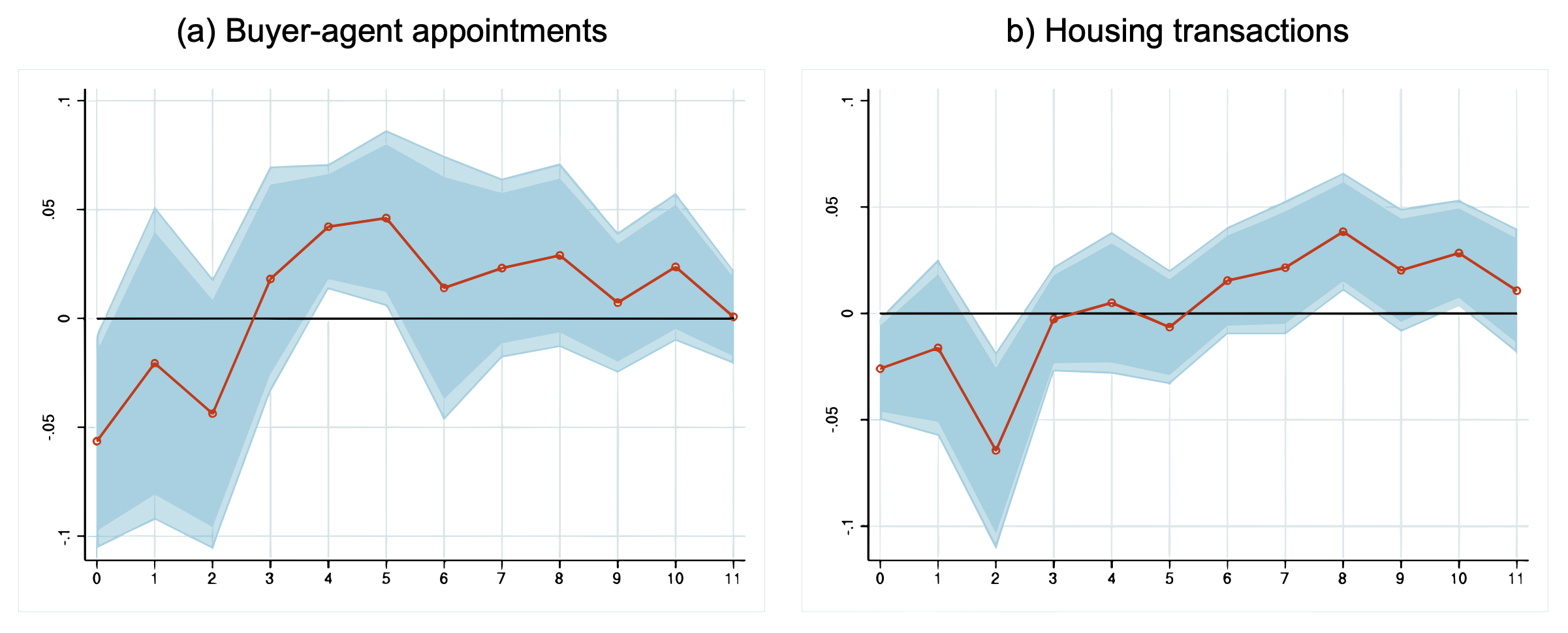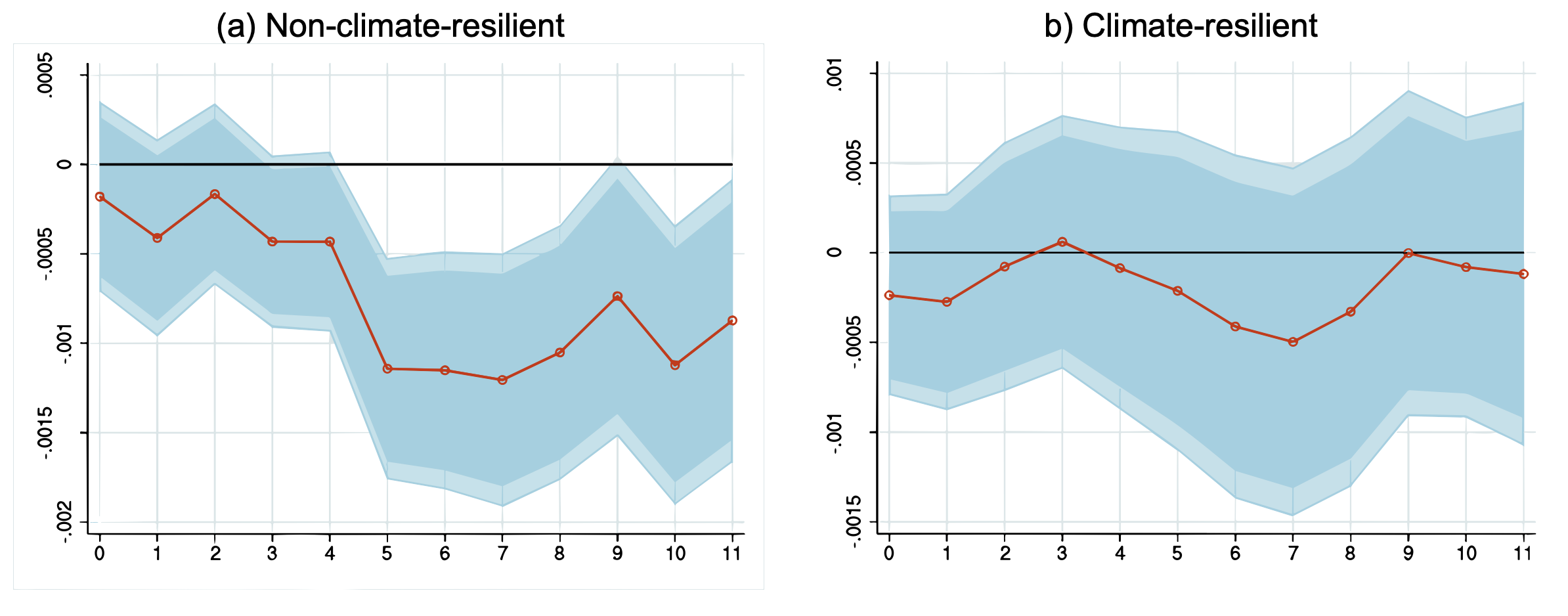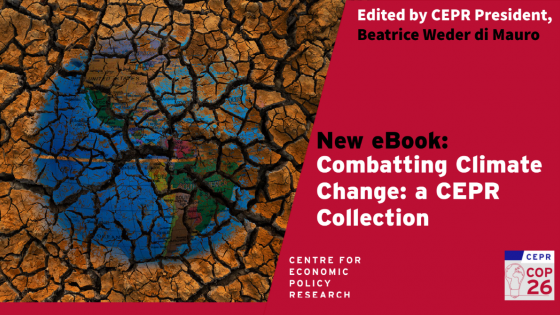As the world grapples with the multifaceted challenges posed by climate change (Weder di Mauro 2021 Blanchard and Tirole 2022, Natoli 2023), a lesser-known impact is emerging in an unexpected realm: housing markets. While discussions on housing and climate often revolve around the longer-run risks of sea level rise, there is no evidence in the literature on the effects of extreme temperatures, which are known to negatively affect people’s health (Carleton et al. 2022), labour productivity (Somanathan et al. 2021), and human behaviour more generally (Busse et al. 2015), on house prices. In the housing market, temperatures can credibly influence the matching between buyers and sellers, as many parts of the housing search is conducted outdoors, exposing individuals to weather fluctuations.
In a new paper (Cascarano and Natoli 2023), we delve into the interplay between individual housing search processes and the aggregate shocks caused by extreme temperatures. To unravel this phenomenon, we curated a comprehensive dataset tracking 2 million online housing advertisements between 2016 and 2019, as well as in-person appointments of buyers and sellers with real estate agents across major Italian cities. Employing daily temperature data at the municipality level, we examine how an increase in the incidence of hot days in a month can affect search activities and, as a consequence, the number of housing transactions and prices. The estimates are carried out in a monthly panel setting, either at announcement level (when the target variables are online search and prices) or at city level (for transactions and in-person appointments), grasping the effect of hot temperatures over a 12-month horizon using local projections.
Figures 1 and 2 report the main results of the analysis. Figure 1 shows that an increase of the share of days with average daily temperatures exceeding 25°C in a month leads to a contemporaneous fall in the number of in-person visits to the houses for sale (Figure 1a), and to a fall in the number of housing transactions two months after (Figure 1b).
While these effects are temporary – searches resume after the heat – the downward revision in house prices appear persistent. At the root of these dynamics lie the unequal impact of temperatures on residential houses with certain climate-related characteristics. Indeed, by splitting the set of houses for sale into those with structural climate resiliency features – with high energy efficiency (that reduces heating and cooling costs) and outdoor spaces where people can cool down during heatwaves – and the rest, Figures 2 shows that prices decline five months after the shock only for non-climate-resilient ones (Figure 2a), while prices are not impacted significantly in the cases of resilient houses (Figure 2b). Other modifiable climate-related characteristics, such as the presence of an air conditioned system, are found to play a minor role.
Figure 1 Effect of temperatures on housing search and transactions
Note: Vertical axis is expressed in percent.
Figure 2 Effect of temperatures on the price of non-climate-resilient versus climate-resilient dwellings
Note: Vertical axis is expressed in percent.
All in all, Figures 1 and 2 suggest that hot temperatures induce two separate effects. On one side, they hinder search in the short run, acting as a friction in the buyer-seller matching process. On the other side, they redirect buyers' preferences towards homes that are better prepared for extreme temperatures. This narrative aligns well with a ‘wake-up call’ effect of high temperatures, for usually inattentive agents, on the future economic risks of climate change, which has been documented in recent academic contributions (Hong et al 2023, among others).
This interpretation of the results is confirmed by two additional analyses. First, the different price effect across housing types is not driven by a heterogeneity in housing demand, as the same result also holds within the pool of houses with similar prices per square metre in each city, suggesting that the preference shift is broad-based across different housing clientele. Second, on contrast to houses for sale, hot temperatures do not induce significantly negative price effects in the rental market, where the shift in preferences is plausibly inconsequential due to the shorter-term nature of renting decisions.
While the average price drop per housing unit is arguably small – with average elasticity of 0.007% at the trough, or 0.2% for one additional hot day per month – the overall impact on the housing sector can be potentially large. Indeed, a back-of-the-envelope calculation based on the volume of housing transactions in Italy, worth €123 billion in the first quarter of 2023, suggests that one additional hot day per month might generate a realised loss in housing transactions of about €0.8 billion.
In sum, our study's findings illuminate a hitherto unexplored facet of the influence of climate change on housing markets by introducing a short-term, climate-related driver of house prices. Temperature variations wield the power to influence housing search patterns on a broader scale, underscoring the far-reaching nature of this phenomenon. Importantly, households seem to value the risks associated with the ongoing climate change and seek ‘climate safety’, as has been found with financial investors directing their funds into countries at lower climate risk (Ferriani et al. 2023). This observation injects a new dimension into conversations aroud climate-related financial vulnerabilities for households.
Authors’ note: This column does not necessarily reflect the views of the Bank of Italy or the ESCB.
References
Blanchard O and J Tirole (2022), “Major future economic challenges”, VoxEU.org, 21 March.
Busse M R, D Pope, J Pope and J Silva-Risso (2015), “The Psychological Effect of Weather on Car Purchases”, The Quarterly Journal of Economics 130(1): 371-414.
Carleton, T, A Jina, M Delgado et al. (2022), “Valuing the Global Mortality Consequences of Climate Change Accounting for Adaptation Costs and Benefits”, The Quarterly Journal of Economics 137(4): 2037–2105,
Cascarano, M and F Natoli (2023), “Temperatures and search: evidence from the housing market”, available at SSRN.
Ferriani, F, A Gazzani and F Natoli (2023), “Flight to climatic safety: local natural disasters and global portfolio flows”, VoxEU.org, 1 August.
Hong, H. G, N Wang and Y Jinqiang (2023), “Mitigating Disaster Risks in the Age of Climate Change”, Econometrica.
Natoli, F (2023), “The Macroeconomic Effects of Temperature Surprise Shocks”, Bank of Italy Temi di Discussione (Working Paper) No. 1407.
Somanathan, E, R Somanathan, A Sudarshan and M Tewari (2021), “The Impact of Temperature on Productivity and Labor Supply: Evidence from Indian Manufacturing”, Journal of Political Economy 129(6).
Weder di Mauro, B (ed.) (2021), Combatting Climate Change: A CEPR Collection, CEPR Press.





